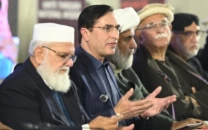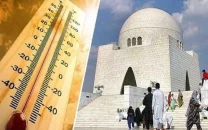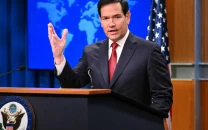Power riots in Punjab
The Punjab govt has the right to protest but must not encourage the mobs to destabilise its urban centres from within.

The power shortage is overwhelming: 70 per cent of the demand is still unmet, which means that the rising urban lower middle class was made to fry in the June heat. In such a situation, the urge for violence was natural but was given a sharp edge by the politics of apportioning blame by our politicians. Islamabad had it very easy with just three or four hours of loadshedding as opposed to Lahore, which suffered over 12 hours of power outage. Some ministers of the federal government have insinuated that in some cities, the ruling PML-N leaders have instigated the mayhem that saw the masses going out and wreaking destruction on public property.
Significantly, in Gujranwala, the mobs did not allow the PML-N leaders to lead the protest march. The reasons could have been many, given the industrialised economy of the city, including the inability of the Punjab government to produce its own electricity and its unwillingness to arrive at a working relationship with the federal government.
The Punjab government blames the federal government’s revengeful bias for what has happened. Power generation has dropped to a paltry 9,400MW against the total demand of 17,400MW in the country. But out of the 9,400MW, 600MW was diverted to the Karachi Electricity Supply Company (KESC). Line losses accounted for another 600MW that didn’t come to Punjab and there was understandable favour shown to the industrial sector where loadshedding was for only six hours.
Everything has been politicised and national crises are used to put each other down instead of uniting in the face of a common calamity. The independent power producers (IPPs), which produce most of the electricity, are not given the money needed by them because the government doesn’t have it. And the gas needed by power generation units is mostly consumed by the CNG sold at the pumps and piped into private homes. If a change in policy is not made, then in the coming months and years, Pakistan will have to keep on bearing Rs50 billion in annual subsidies on gas alone. But the politicians are not doing anything to form a consensus on this.
Under law, Sindh is supposed to get more gas supplied to it because Pakistan is using gas extracted from Sindh after having cleaned Balochistan of its gas and squandering it on households. New finds in Kohat and other areas with militancy problems will probably not be brought on line for a long time because our army expects to fight another war in Afghanistan against what looks like the entire world and aims to use the same terrorists who torment us to defeat another superpower.
It is not a wise policy to arouse the people of Punjab into frenzy simply because you want to win their vote based on hatred for the PPP. The PML-N might regret the decision made by Chief Minister Shahbaz Sharif to aid and abet this ‘revolution’ in his province. Party leader Mian Nawaz Sharif has reinforced the policy of his brother by publicly endorsing it, which means that prominent leaders will take to the streets in the coming days and take part in more vandalism in their own constituencies. Chances are that once the mobs become habituated to speaking through anarchy, even normal times will become tough to face.
Punjab is the biggest province but it is also the most at peace with itself. Line losses and non-payment of bills are the least here. The Punjab government has the right to protest but it must not encourage the mobs to destabilise its urban centres from within.
Published In The Express Tribune, June 19th, 2012.



















COMMENTS
Comments are moderated and generally will be posted if they are on-topic and not abusive.
For more information, please see our Comments FAQ